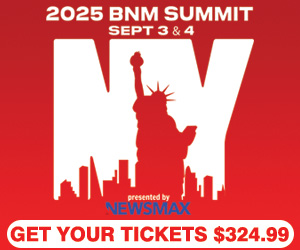As mentioned previously in this column, I look at a great deal of radio and media-at-large trade press. Almost daily, there is a report about one study or another that “proves” the effectiveness of some advertising medium. And it’s not surprising that the person, company, or organization that is touting the study not only had something to do with it, but the results are also positive for the medium in question.
Since these studies have probably been going on for a century or more, we have one clear conclusion: advertising works. In general, if you don’t advertise, you don’t sell as much of whatever it is that you’re selling. And according to the studies, you can use almost any medium to get the word out.
Radio has released any number of studies confirming that radio works for advertisers. Wondery just announced that the company is working with several suppliers to tell you how well your podcast advertising is doing.
Last week, Screenvision told us that ads in movie theatres get more attention than just about any other type of advertising based on their studies. It makes sense because if I’m sitting in a darkened theatre waiting for the movie to start, what else would I do? Check my phone? Chat with my seatmates? Or watch a commercial on the big screen with big sound? Of course, Screenvision sells those ads you see ahead of the flick.
This isn’t to knock Screenvision’s study. The details in the MediaVillage article made sense. I’ve been involved in studies like these over the years and the results are typically the same, in other words, advertising works to achieve a goal, whether it’s attention, recall, etc. Of course, if a study didn’t show some positive outcome, it’s unlikely you’d ever hear about it.
The higher-level goal, product, or service purchase, is always a little trickier. I can use terms like “consumer journey” or other jargon, but what it comes down to is when the consumer wants or needs to buy an item or service, they go to the advertiser. I don’t buy insurance very often, but GEICO, State Farm, Progressive, Allstate, Liberty, and Farmers, all of which advertise constantly, are sure to be in my mind. Flo, Doug, the Gecko, and Mayhem are always selling. Or if I switch to State Farm, can Jake get me some good seats for a Kansas City Chiefs game? He apparently knows everyone on the team. Oddly enough, all my coverage is with Erie Insurance, which almost never advertises.
I wish I had a brilliant answer for this cacophony of research. Would anyone believe the advertising sellers if we said that we don’t need to do any more research because we know advertising works?
The May 23rd edition of The Economist had an article about Walmart’s latest product, which is its consumer (“Walmart’s Latest Product? Its customers” paywall). Walmart sold $3.4 billion in ads last year which sounds very small compared to the $600 billion of items sold in its stores, but the advertising business made up 7.5% of profits and according to the article, one analyst suggests that by 2026, 13% of Walmart’s profits will be from advertising.
Meanwhile, Amazon sold $47 billion worth of ads in 2023 per The Economist article. If you go to Amazon’s advertising site, it’s incredibly simple. The Amazon Ads site has lots of tips and case studies. While I may have missed one, I didn’t see a single study that checked on what consumers think, but instead, you’ll see how to advertise, why do it, and plenty of case studies with companies that successfully used Amazon advertising (any that weren’t successful probably don’t appear on the site). Again, Amazon Ads brought in $47 billion last year. That’s almost three times what was spent on all radio advertising in the US in 2023.
I was never a great salesperson, in fact, I was never a good salesperson. Nonetheless, it seems to me that radio probably needs fewer studies and more innovation, effort, experimentation, especially in what appears to be a flat spending environment. Chris Brunt of Jacobs Media was saying the same thing in last Friday’s Jacoblog.
It’s tough to compete with digital. Amazon can show that the ads led to a specific number of clicks to the product and produced a specific number of purchases. Still, Amazon couldn’t draw those people in for a product if they weren’t thinking about purchasing it in the first place. And according to all the studies, radio advertising works!
Let’s meet again next week.




